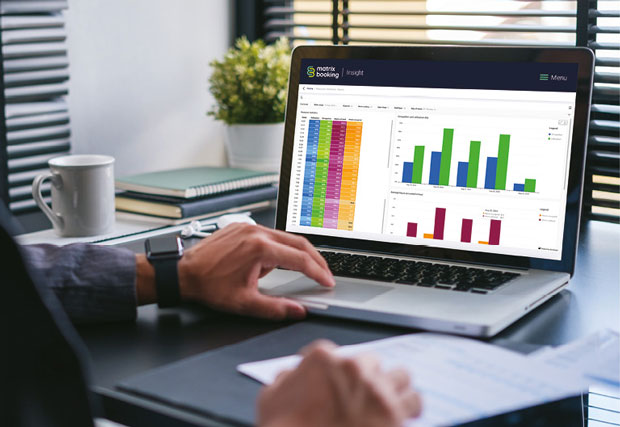 Joe Nwume-Proctor, Product Owner at Matrix Booking explains how a London-based company has taken an important step towards smarter workspace management by adopting data-driven room management solutions to better understand how it manages space
Joe Nwume-Proctor, Product Owner at Matrix Booking explains how a London-based company has taken an important step towards smarter workspace management by adopting data-driven room management solutions to better understand how it manages space
Hybrid working has reshaped how organisations use office space, but many businesses are still navigating the challenge of understanding actual workplace usage. With employees coming into the office on different schedules, meeting room availability has become unpredictable. While some rooms remain empty despite being booked, others become overcrowded. Managing this without accurate data is difficult, leading to inefficiencies, frustration, and wasted resources.
For one London-based company, these challenges became increasingly evident. The organisation relied on traditional methods such as manual surveys and staff-led occupancy counts to assess how space was being used. These approaches were time-consuming, often inaccurate, and failed to provide the level of insight needed for effective decision-making. Recognising the need for a smarter approach, the company partnered with Matrix Booking to take a data-driven look at its meeting room occupancy.
MOVING TO A DATA-DRIVEN MODEL
Matrix Booking implemented its Sense solution, integrating Passive Infrared (PIR) and dual-beam sensors within the organisation’s existing room booking system. By feeding real-time occupancy data into this workplace analytics platform, the company could directly compare booked meeting room data with actual usage. This provided a clear, accurate picture of how rooms were being used in practice.
The installation process was quick and unobtrusive. Within a half-day, sensors were installed across six meeting rooms, ensuring minimal disruption to the business. Just four weeks later, there was already a rich dataset available, allowing the company to start making sense of its meeting room utilisation. The full pilot, from initial installation to sign-off, was completed in five weeks, setting the stage for potential wider implementation across the building.
GAINING CLARITY THROUGH REAL-TIME INSIGHTS
Once the system was live, it quickly became apparent that meeting room usage was far from optimal. Two key reports generated through Matrix Booking’s platform provided valuable insight to the company.
First, occupancy analytics highlighted peak usage times, revealing patterns in how meeting rooms were being used throughout the week. Like many hybrid workplaces, the company saw a noticeable concentration of meetings on Tuesdays and Wednesdays. This created unnecessary pressure on available rooms while leaving other days underutilised. The data enabled the company to take a more balanced approach, helping teams distribute their in-office days more evenly to make better use of space.
Second, the booking vs. occupancy analysis exposed discrepancies between scheduled bookings and actual room usage. The data showed that some rooms were booked but left unoccupied, while others were frequently overcrowded. These inefficiencies had previously gone unnoticed, contributing to unnecessary strain on meeting room availability. With clear evidence of the problem, the company could begin addressing these challenges and encourage more effective booking practices.






